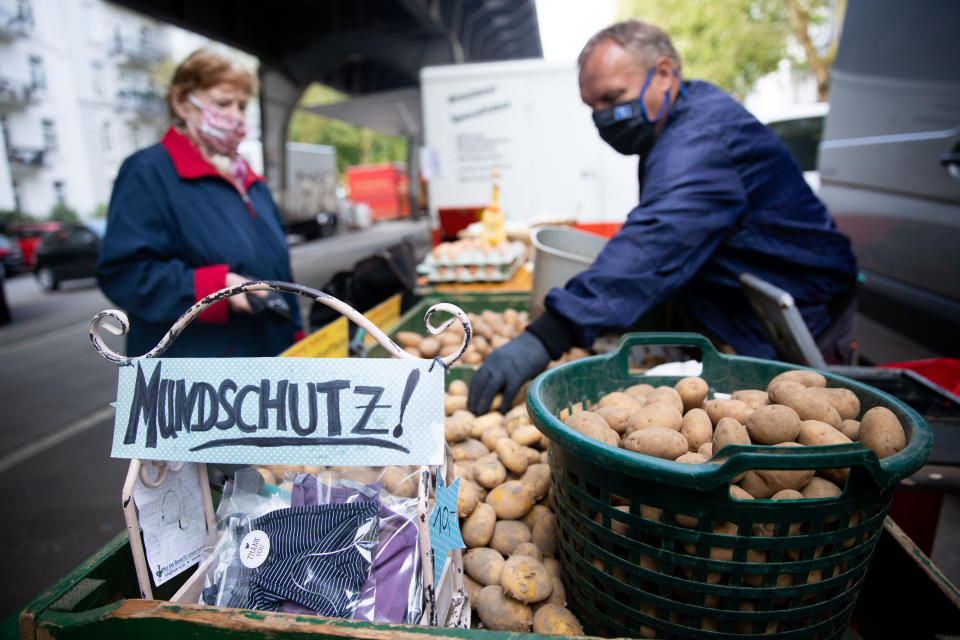Ifo: German economy will shrink by 6.6% this year due to COVID-19

Germany’s Ifo economic institute has predicted that Europe’s largest economy faces a 6.6% contraction in 2020, as the coronavirus pandemic hammers businesses.
In its April survey of around 8,800 companies, the economic think tank found that Germany’s economic output had fallen by 16% across all industries because of the national lockdown measures, which have been in place since 22 March.
Gross domestic product dropped by 1.9% in the first quarter and is predicted to shrink by 12.2% in the second quarter, according to the Ifo.
“Overall, economic output is likely to shrink by 6.6% calendar-adjusted this year,” said Timo Wollmershäuser, head of Ifo economic forecasting. “If you take into account the comparatively large number of working days, the decrease is reduced to 6.2%.”
At the beginning of April, the institute’s economists had predicted the economy would contract by 4.2%. However, that was based on the coronavirus lockdown ending in the middle of April, which has not happened — it is taking longer and opening up more gradually.
“As a result, we especially downgraded the second quarter (-12.2% instead of -9.8%) and weakened the recovery in the third quarter (+6.8 instead of +8.5%),” Wollmershäuser told Yahoo Finance UK. “Taken together, the decline in 2020 as a whole is therefore more pronounced.”
READ MORE: Merkel: 'We mustn’t think for one second that we are safe'
The Ifo says that the German economy is not likely to return to its pre-coronavirus state in terms of production of goods and services before the end of 2021.
Unsurprisingly, the industries that suffered the most dramatic slumps in April were travel, where business was down 84%, aviation, which shrank by 76% and the hospitality industry, which shrank by 68%. The pharmaceutical industry was the only sector that has not seen a contraction.
“The consequences of the corona crisis will be felt well into the next year by leisure, entertainment, culture, accommodation and restaurant businesses,” Wollmershäuser said.
The Ifo is basing its predictions on the assumption that coronavirus will remain a problem, but stay contained and that Germany won’t experience a second wave of infections.
Chancellor Angela Merkel has warned that the country is far from out of the woods with the pandemic, and there are fears that a second wave could hit the country now that shops and playgrounds have been largely allowed to open in most states, and some students will return to classes as of 4 May.
According to Johns Hopkins University data, Germany currently has 158,758 confirmed cases of coronavirus, and 6,126 deaths.
READ MORE: Austria to loosen lockdown from 1 May
Authorities said on Tuesday that the transmission rate had ticked up from 0.9 to 1.0 again — despite the goal to keep it to under 1.0 to flatten the infections curve and ensure that hospitals were not overwhelmed. This key measure of containing the pandemic will be closely watched in the coming hours and days to determine if easing the lockdown measures risks a second spike in cases.

 Yahoo Finance
Yahoo Finance 